T-Intelligence presents the daily journal for Raqqa. This space will contain (hopefully) daily entries regarding the developments in the battle for Raqqa, yet time gaps may very as this project depends not only on what happens in the field but also on what amount of data (quantity, quality, credibility) surfaces online.
Methodology and Objectives
From reasons of time efficiency, information privilege and empirical manners, this journal will not have a complete reference system. The methodology is based on OSINT (open-source intelligence) and crowdsourcing. Sources stretch from mainstream media, to local news posts in English or translated from Arabic or Turkish (Furat FM, Raqqa24, Rudaw, Rojava News etc.), individuals on social media (accounts of fighters, independent OSINT analysts), monitoring groups or primary sources (YPG Press Office, Amaq Agency, Inherent Resolve Coalition).
While there are many other crowd sourced maps or pages, what this project also attempts is to provide a larger context and a comprehensive understanding of the situation and how it evolves in an analytical intelligence-memo framework. Each day will contain a tactical briefing reflecting the situation on the ground as depicted through open-source channels, periodically a battle-map, and always will include the facts and figures of the Coalition’s air strikes.
Please consult this page regularly, especially in the evening to catch the daily updates.
https://www.youtube.com/watch?v=Dx03DecGQ20
Prologue
Raqqa was captured in summer 2013 after ISIS infiltrated the city’s societal fabric and achieved subversive domination over the Rebel groups. Shortly after ISIS instituted the city as its own capital and developed several governance-like abilities, as Sharia Police, separates courts, a tax system and imposed a strict Sharia law, doubled by a brutal security and control apparatus that’s reminiscent of the Ba’ath intelligence infrastructure.
In November 2016, the multi-ethnic Syrian Democratic Forces (composed of Arab, Kurds, Syriac, Turkmen factions and fighters) announced the Operation ‘Wrath of Euphrates’. Backed by the US-led Coalition ‘Inherent Resolve’, they planned and executed a 4-stage plan purposed to isolate and surround Raqqa. In April, President Donald J. Trump ignored Turkey’s protests or alternative proposals, and authorized the Pentagon to directly arm the Kurdish segment (YPG) of the force.
Upon the completion of all 4 phases, on June 6th the SDF announced a new and last level: phase 5 – assault and liberate Raqqa.
The post-battle situation is expected to be transferred to a non-military authority, formed by the SDF in March 2017 and called Raqqa Civil Council, composed mainly of Arabs in accordance with the ethnic-social make-up of the entire Raqqa Governorate.
Before commencing with the journal take a look at this infographic regarding the factions of the Syrian Democratic Forces (SDF) involved in the operation to free Raqqa, trained, armed and supported by the US-led Coalition Inherent Resolve.
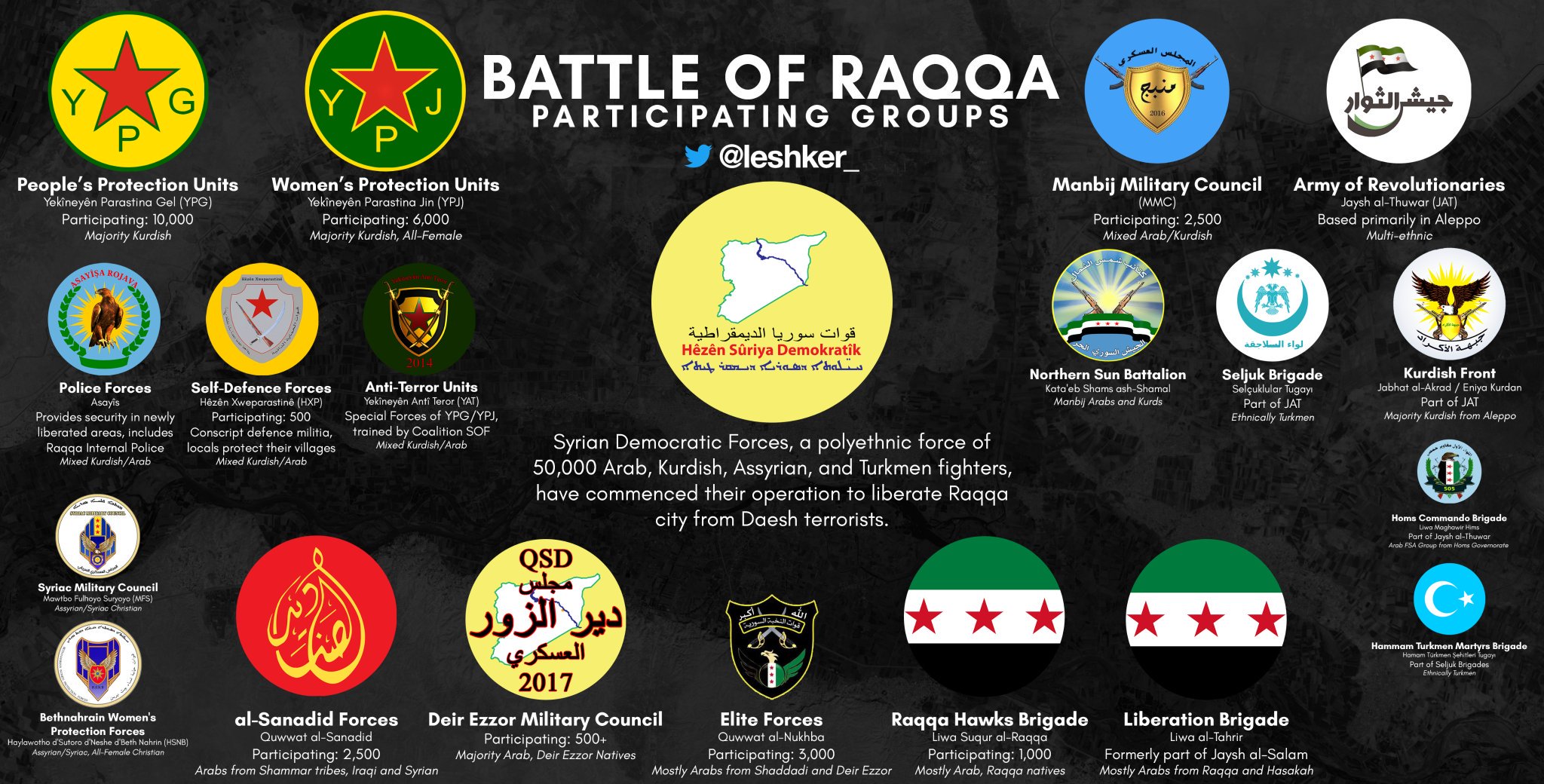
June 6th, 2017
Around the morning of June 6th, the Syrian Democratic Forces (SDF) with its whole now fully armed Kurdish, Arab, Syriac, Turkmen components have made use of their consolidated and freed land that surrounded the ISIS-held „capital” of Raqqa and commenced with the long-awaited assault. This was the scene of so many institutionalized atrocities as crucifixions, decapitations, stoning to death or sexual slavery legitimized through the strict fundamentalist Sharia law implemented and enforced by the Sharia Police. Doubled by the militant-jihadi indoctrination of the youth and weak, Da’esh projected a regime of fear reminiscent of the ex-Baath security and control apparatus.
Backed by artillery support, advising and air strikes from the United States and the other partners of the Inherent Resolve global anti-ISIS Coalition, the SDF has launched a synchronized assault on the city from three separate fronts:
- North: this land was secured and consolidated firmly over the past four months.
- West: the battle hardened forces that were airlifted over the Lake Assad on March 23rd by US Marine Corps and brought on the Shurfa peninsula, later liberated the difficult Tabqa Triangle: the city, the dam and the airfield. Later on, they liberated the Ba’ath Dam and continued on the Euphrates river valley until the western limits of Raqqa city.
- East: present in the area for over three months, these forces pushed the frontline farther down the Euphrates valley and into Deir-Ezzor governorate to cut the link with Raqqa, and continuously ought to pass on the southern banks of the river to completely block the last avenue of escape and supply for the terror group.
The assault was synchronized yet it varied from front to front. The western forces faced a consistent resistance in the peripheral villages of Hewi Hawa and Harqalah and achieved moderate, slightly advances. Several waves of shelling were exchanged between the combatant forces that eventually softened ISIS defenses and propelled the SDF to later advance over the villages two mentioned villages the later day.
The eastern forces were the first ones to step into Raqqa city after marching into the Mashalab neighborhood. They encountered a wave of SVBIED (suicide-cars) but managed to penetrate the district and to conduct counter-maneuvers through the main and secondary streets therefore consolidating their win. Clashes also took place just 600 m north-east near the Sinna Hill, where SDF forces attempted to storm the area.
The northern contingent moved relatively well after taking position around the abandoned military base that belonged up to 2014 to the Syrian Arab Army’s 17th Divison, and near the Sugar factory. Several expeditionary elements pushed as far as the grain silos at the city entrance, prompting fire fights.
The insertions were complemented by at least 24 U.S. airstrikes purposed to soften ISIS’s defenses on the peripheral area but to also decapitate the leadership and throw the chain-of-command into disarray in the eve of their largest battle ever fought. Open-source traffic proves that Taslif bank (near Panorama Park), used as a ISIS command center, was destroyed by an air strike and that several cars containing HVTs (high-value targets) were engaged in the city center around Alnoor mosque.
Unconfirmed open-source data also suggest that ISIS managed to repeal an US sanctioned airborne operation, that would have attempted to airlift some of the SDF forces from the eastern front using transport helicopters into the southern banks of the Euphrates – the only avenue of escape and logistics still half-controlled by ISIS. I typed “half-controlled” because the only land connectors that Raqqa city had with the southern bank were two bridges, Mansoor and the “New Bridge”, which were destroyed by the US-led Coalition months ago. Transportation can only occur by boats, hence the suspicion of air assets when seeing cross-river activity. There are also reports from Raqqa24 pointing out that the Coalition engaged and destroyed two civilian boats that attempted to cross the Euphrates river, mistaking them for ISIS targets. While it is strategically important to cut any avenue of escape or supply for the terror group, ‘winning the hearts and souls” are again a counter-pillar of a long-term population-centered COIN strategy.
The dawn of the battle for Raqqa debuted with significant gains and comfortable maneuvering around the peripheral neighborhoods and city limits.
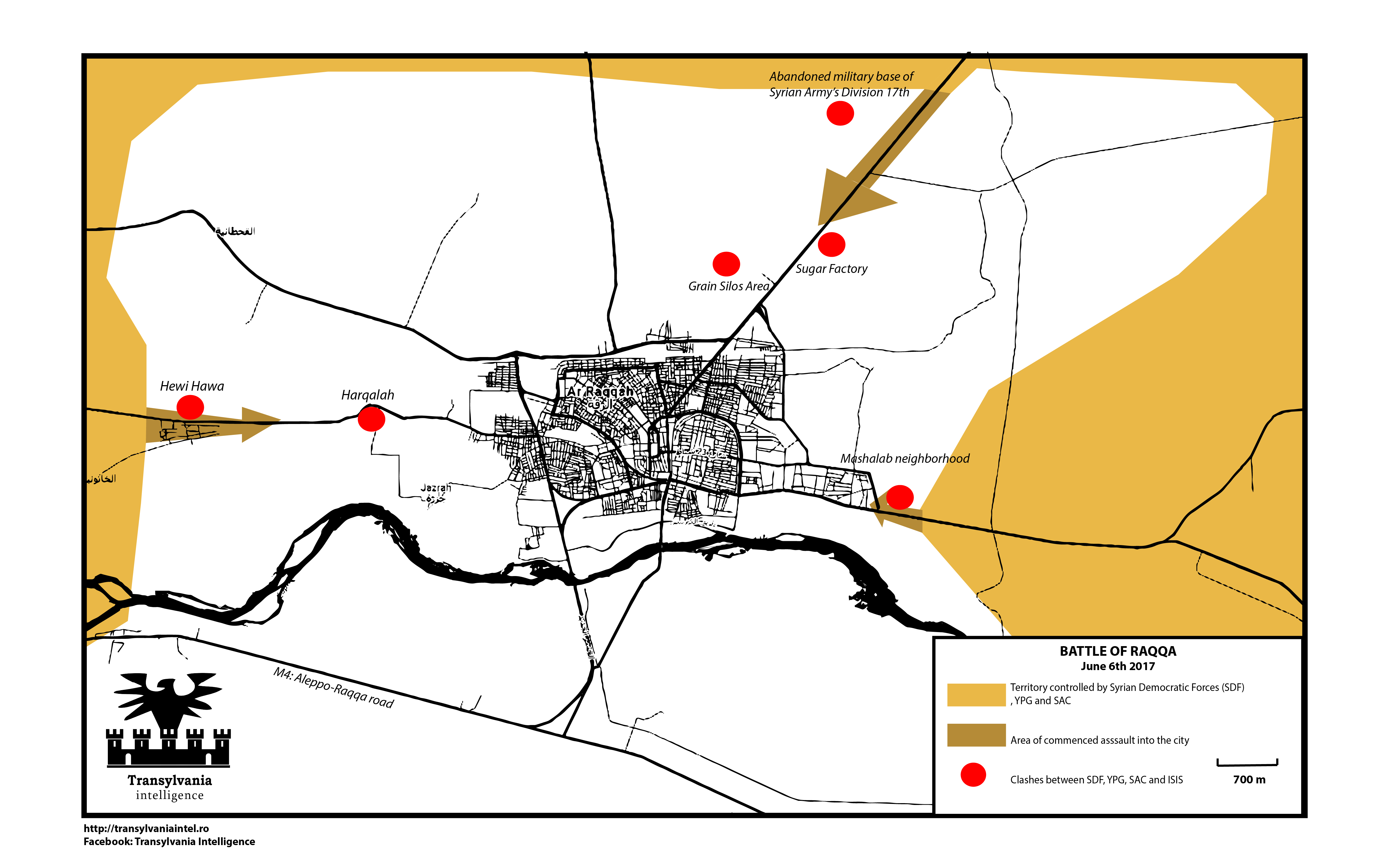
June 7th, 2017
The fight waged on with little territorial progression. Syrian Democratic Forces (SDF) consolidated their forces in Mashalab neighborhood in the east accompanied with perpetual air support from the Coalition.
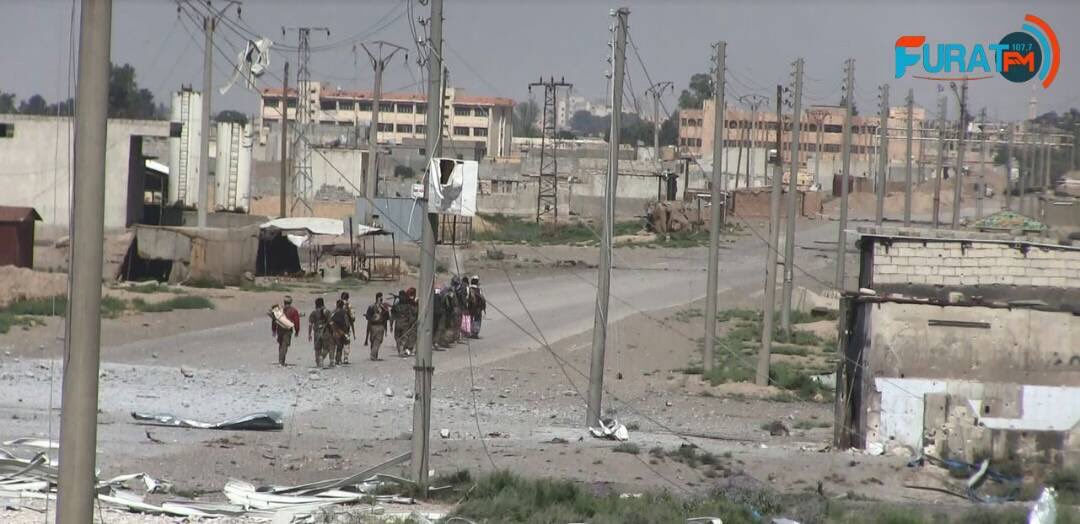
SDF forces in Mashalab district (east).
In the west, the SDF managed to hold their ground around the villages of Hewi a Hawa and Harqalah despite heavy shelling from the jihadists, and also asserted their presence through ‘expeditionary’ endeavors on the western neighborhoods, but notably in Jazrah.
The campaign was trouble by internal tensions between the YPG (Kurdish) and Jabhat Thuwar al-Raqqa (Arab Sunni) that ultimately excluded the later from the fight. However, their fighters were given the option to join other groups from the Syrian Arab Coalition (SAC) of the SDF, as Liwa Suqur al-Raqqa (which are former Jabhat Thuwar al-Raqqa fighters), Jaysh al-Thuwar, Liwa al-Tahrir, Democratic al-Shamal Brigades, al-Sanadid Forces, Deir-Ezzor Military Council, Manbij Military Council, Maghawir Humus Brigades or Quwwat al-Nukhba.
The internal fracture is not merely based solely on identity politics, but on suspicion and lack of trust. Jabhat Thuwar al-Raqqa (JTR) or “Front of Raqqa Revolutionaries” was founded in 2012 as a Rebel group based in Ayn Issa, and fought during 2014-2016 together with the Kurdish YPG in the Euphrates Volcano joint war room that was later re-organized under the SDF banner. Much of the founding came from Turkey and was, or still is, perceived as a front for Turkish influence in the multi-ethnic umbrella group. The rift hasn’t developed just with the Kurds but also between them as well. Because of these tensions many Arab fighters left JTR in 2015 to form other factions such as Shuhada al-Raqqa (Raqqa Martyrs’ Brigade) and Liwa Suqur al-Raqqa (Raqqa Hawks Brigade) that entertained a cooperative relationship with the YPG inside the SDF. Although the Arab segment in the SDF is mentionable, the proportion still holds at 60% for the Kurds.
Tensions are expected to persist between the Kurdish-Arab groups as the city of Raqqa and its SDF-founded governing body, Raqqa Military Council are expected to be handed over to Arab elements after ISIS is ousted from the city. Hussam Awak, the commander of the JTR said in May 2017 that his role “[in Raqqa] will be essential, especially in the civil and humanitarian affairs”.
Reports suggest that ISIS has imposed a ‘media blackout’ on the civilians in Raqqa, shutting the tightly monitored internet cafes in the city center.
At the end of the day over 75 casualties were administered by the SDF to ISIS.
June 8th, 2017
US-led Coalition estimates that there are around 2,500 jihadists in Raqqa. This day witnessed significant escalation on the battlefield as the northern forces captured the ex-military base of the 17th Division and the Sugar factory across the road, but also pushed to the grain silos where clashes intensified.
SDF troops in western Raqqa managed to take control of the Harqalah and Hawi a Hawa villages but their positions were still contested. Their previously mentioned ‘expeditionary’ effort reached the junction road to Jazrah suburb, where they now encountered a stiff jihadi resistance that ultimately repealed their advance from Sibahyia. Coalition launches a series of air raids in the eastern and western neighborhoods, rumored to have contained white phosphorus. The airplanes also drop thousands of leaflets to demoralize ISIS fighters, containing the message: “surrender or die like in Manbij and Tabqah”.
Raqqa24 also informs that ISIS puts a lot of effort in order to contain the civilian population inside the city, as they arrested people trying to flee, burned their passports and their cars.
In the evening, the Amaq Agency (ISIS propaganda) has released a video on Twitter showcasing the Coalition’s bombardment with white phosphorus/ incendiary munitions. This arsenal definitely serve as a propaganda tool for the days or months to come. White phosphorus, reminiscent of napalm in Vietnam, is commonly used to incendiate flammable enemy assets as ammo depots or underground facilities within reach, however their deadly proprieties are infamous as they can cause burns to the bone, or intoxication if came in contact with water, so it’s easy to understand why ISIS fears these weapons more than anything.
https://www.youtube.com/watch?v=LRQ3LfCPJuc
Reports suggest that both sides had taken a lot of casualties this day. Also, a video appeared online showing the YPG Special Forces (YAT) preparing for a command operation in Raqqa.[watch video]
June 9th, 2017
More footage of white phosphorus being dropped from fighter jets surfaced online, attached with reports of civilian casualties administered by it – unconfirmed.
In the eastern peripheral neighborhood of Marshalab, it’s said that SDF has taken a relatively full control of the district [watch video] with the help of American A-10’s (Warthogs) that have been seen providing CAS (close air support) [watch video].
On the parallel front, SDF troops entered the Sabahiya neighborhood after having repealed ISIS attacks on the villages of Harqalah and Hawi a Hawa. Sabahiya is the most westwards neighborhood of Raqqa, a steadfast liberation is critical important to establishing a hub for surgical, tailored missions inside the city that could outmaneuver and flank ISIS fighters.

ISIS flag thrown from a building in Jazhra, Raqqa, Syria.
Moreover, the SDF managed to capitalize on the previous ‘expedition’ spearheaded in the Jazhra suburb by capturing it, and by
scavenging a mentionable stockpile of explosives left behind by ISIS [watch video]. In a symbolic gesture, an ISIS black flag was removed from the tallest building in the area. (see photo)
Advanced armored vehicles (Pandar with 40mm cal.) have been spotted gradually moving inside Raqqa, to be used in the intense urban warfare ahead. According to the SDF fighters they’ve been “trained by U.S. forces to use them”. [watch video]
Amaq Agency (ISIS propaganda) says that they killed 18 YPG fighters and 2 US Special Forces in eastern Raqqa, no confirmation from the US or SDF. Probably just false information. Also, civilians are forced by ISIS to take weapons and fight against the SDF.
“Coalition SOF are in Raqqa, and they are close to the front lines,” said Col. Ryan Dillon, a spokesperson for the U.S.-led coalition battling ISIS in Syria and Iraq. The Americans are not “kicking down doors,” Dillon added. Rather, their primary mission is to advise partner forces, though they are authorized to defend themselves. (‘SOF’ are Special Operations Forces)
Northern forces have moved the battlefront from the ex-17th Division military base and Sugar Factory, to the grain silos where an encirclement takes place.

Photo taken on June 9th, 2017, by SDF fighters near the grain silos, northern flank of Raqqa
The SDF has captured its second neighborhood in Raqqa, located in the western flank, the Sebahiye district was captured on the night of June 9th [watch video]. More refugees are checked-in at Ain Issa, north of Raqqa. The US-led Coalition carried around 20 strikes in and around Raqqa, by engaging 12 tactical units (this usually means an armored jeep with a machine gun attached to it, and operated by 3-4 fighters), destroyed seven fighting positions and four vehicles. Also, they they have neutralized 3 headquarters, a VBIED (suicide car) and an ISIS-held building, in addition to providing suppressing fire on several instances.
June 10th, 2017
SDF have entered the northwestern Roman (Romaniah) neighborhood, an Arab majority district, where 21 ISIS fighters have been already killed this morning. Reports suggest that a new wave of white phosphorus bombings took place last night on the western front. While the grain silos are still held by ISIS, the SDF has completely surrounded the objective and are engaged in violent clashes to expel them.
In a dramatic turn of events, it is reported that ISIS launched a counter-attack and took back the northern army base of the ex-17th Division. Awaiting confirmation, yet that would be possible as the distance from the grain mill and silos that were surrounded yesterday by the SDF, and the ex-Divison base is just 3 km.
Raqqa24 also reports that ISIS reinforcements come from the Euphrates valley of Deir-Ezzor governorate and from Iraq. ISIS pushed back the incoming SDF forces in the western district of Romaniah. Intense US air raids near the eastern district of Mashalab and Sina’a, where leaflets were also dropped with instructions for civilians to evacuate.

Kurdish YPG flag waving while an SDF convoy cruises through the western area of the city.
Rabi’a farm area, just 3 km northwest is reportedly the operations room of the battle, hosting US units and SDF commanders. Additionally, a convoy of armored vehicles, including Oskosh JLVTs, donated by the US to the Syrian Democratic Forces, has been spotted north of Raqqa in a push to enforce the frontline there [watch video]. Violent clashes have continued throughout the day in the northwestern Romaniah neighborhood with little to no progress. Consequently, a second opening on the northern flank would ease the pressure on the effort.
June 11th, 2017
SDF managed to retain foothold in Romaniah district over night and have repealed an ISIS attack to push them out. In the fire exchange this morning, at least 11 jihadists were killed. Upon being repealed the ISIS attack turned into a retreat caused by a swift counter-offensive launched by the SDF.
More ISIS attacks occurred in Mashalab and northern Raqqa city, including in the previously captured Sugar factory and army base of Division 17th that are now deemed as contested. The front is short in length, varies from a few hundreds of meters to maximum 2-3 km, situations can shift and turn easily.
They have now relatively liberated the 3rd neighborhood in Raqqa, the Romaniah district. (around 11:00 am) reported by local Kurdish news stations and individual fighters. The district is the exact northwest corner of the city and it’s limited in north by the railway.
Official strike released of Combined Joint Task Force Inherent Resolve (anti-ISIS Coalition) reports 23 strikes engaged 20 ISIS tactical units; destroyed 16 fighting positions, two vehicles, and two ISIS boats; damaged five ISIS supply routes; and suppressed an ISIS tactical unit. [source]
June 12th, 2017
Eastern front is pushed from the already established Mashalab neighborhood, to the Sina’a district and Industrial Zone, located at just a few hundred of meters north-west of the previously mentioned district, but right next to the Bab-al-Baghdad gate that provides access through the fortified walls that surround the City Center. The area can be considered an ‘asymmetrical’ terrain, it contains a lot of rubble, trucks or containers industrial containers which are handy for cover, yet the now-and-then open spaces over-watched by tall buildings, up to 3 or 4 floors, might make the area fertile for sniper and counter-sniper maneuvers. US-led Coalition is bombing the Industrial area to soften the enemy presence there.
In a similar fashion, the SDF forces that yesterday captured the north-western district of Raqqa, namely Romniah district, are now attempting (some reports say that they even did) to breach the Arab majority Hatin neighborhood. Half of this district is a wide open field through which SDF will need to make an exposed advanced using armored vehicles complimented by suppressing artillery fire, however buildings are standard 1 or rarely 2 floor blocks, sometimes with wide courtyards populating the ‘traditional’ tight streets. However artillery shelling is (reportedly) going even farther, hitting sub-districts of al-Nahdah, near the Euphrates Basin and Derayi’a.

SDF finds an urban corridor and tunnel network in Mashalab district, Raqqa
Subsequently, sweeping operations are conducted in captured districts to detect IEDs and tunnel networks.As presented in the photo collage above, ISIS has made holes in the walls between the buildings in Raqqa so they can move while still remaining in cover, creating somewhat of an intricate yet improvised ‘urban corridor’ system, that intertwined with more ‘traditional’ subterranean tunnel networks, allow them to move swiftly between even entire neighborhoods. The same tactics and battle-infrastructure was spotted in Mosul as well, of course, at a higher level.
Civilian casualties continue to rise due to the mines and IEDs left behind by ISIS, ‘Raqqa is Slaughtered Silently’ reports.
The Sugar Factory and the former military base of Division 17th located in northern Raqqa have been recaptured by SDF!
June 13th, 2017
In the east, the southern part of Sina’a district has been reached by Syrian Democratic Forces (SDF) after capturing the Faculty of Social Sciences. They are currently near the Bab-el-Baghdad gate of the 8th century Abbasid Caliphate-era walls of Raqqa that surround the city center. In the northeastern corner, upon recovering the territories of Division 17th base and Sugar Factory, SDF forces pushed towards the neighborhoods of Tishrin and Ramelah. Both new position on the eastern flank have been heavily challenged by ISIS, in Sina’a Coalition-backed forces even destroyed 2 suicide cars. Additionally, SDF discovered a VBIED factory similar to what ISF found in Mosul.
SDF established safe corridors for civilians to evacuate from Sina’a, Industrial zone (east) and Hattin neighborhood (west), where they haven’t captured much yet. In the west, SDF are sweeping the captured Romaniah neighborhood and recommend air strikes on certain targets. They have not consolidated the district.
Assessment Capacity Project informs through ARA News the civilian situation: 100,000 internal displaced people in Raqqa’s countryside since the start of the operation. While UNHCR says: “15,000 individuals were displaced during last 10 days after (SDF) launched the operation to take Raqqa. More than half are estimated to have already returned while the rest are waiting for the situation to improve. Some 8,700 IDPs arrived in Ain Issa Cotton Factory Camp (Ar-Raqqa Governorate) in the past week while an estimated 9,100 left the camp during the same period.” Raqqa Civil Council, the political body expected to assume governance in the city after ISIS is defeated called upon the international community to provide more aid. U.N. humanitarian spokesman Jens Laerke told Reuters that, for its planning purposes, the United Nations estimates there are approximately 160,000 people left in Raqqa city, but said this was not a formal estimate. Humanitarian aid organization International Rescue Committee said 200,000 people were still trapped inside, and warned civilians in Raqqa risk being killed by Islamic State snipers or mines if they try to flee but could be used by the militants as human shields if they remain. [source]
US-led Coalition launched 20 strikes through which they engaged 14 ISIS tactical units; destroyed 12 fighting positions, five vehicles, five ISIS boats, two VBIEDs, a recoilless rifle, a command and control node, and a tunnel; and suppressed an ISIS tactical unit. [source]
June 14th, 2017
While making their way through the eastern Sina’a neighborhood, the SDF has reached the Bab-al-Baghdad gate of the previously detailed 8th century walls. The frontline moved to the important historical mosque of Abdul Salam al-Ajilii. SDF encountered stiff resistance from ISIS, including use of SVIDEM attacks in the distrct, where Coalition-backed forces discovered a suicide-car workshop. The eastern front seems likely to be moved in the upcoming days inside the old city center regardless of the historical wall, which may slow the advance.
View from the eastern districts into the city center (photo bellow):
Raqqa city center seen from Sina’a district, just east of the Baghdad gate.
The western front is consolidated and in an attempt to provide a humanitarian corridor, SDF manage to facilitate the evacuation of civilians from Hattin and Romaniah districts. They have entered a small neighborhood, al-Beridh, just east of Romaniah, after the the offensive in Hattin has stagnated half-way. As in the east, this field erupted in violent clashes involving dozens of artillery pieces fired. In the Beridh district, the SDF managed to capture al-Razi school, Furqan mosque and Independence garden. Coalition reportedly struck targets in the city center. Also, rumors indicate that ex-Division 17th base is yet again the scene of clashes after ISIS launched an attempted counter-attack. ISIS continues drone operations and concentrates on US SOFs located around the city, which sometimes even disrupts the operators’ possibility to call in air strikes. Pentagon to send anti-drone equipment and more forces to combat this tactical layer employed by ISIS. [source] -> ‘Unlike in Mosul, where U.S. forces have deployed an array of drone-stopping systems, U.S. troops on the ground in Raqqa are operating with fewer resources and have a limited ability to defend against the small, hard-to-spot aircraft, the official said. The off-the-shelf drones, sometimes used in swarms by the extremist group, are often rigged to drop small 40mm grenade-sized munitions with a relatively high degree of accuracy.’ [Read more] about the drones of ISIS in our analysis regarding these tactics in Mosul operation playground.
US-led Coalition has conducted 11 strikes through which they had engaged eight ISIS tactical units; destroyed nine fighting positions, three ISIS boats, and a vehicle; and suppressed an ISIS tactical unit. [source]
June 15th, 2017
Raqqa24 reports that approximate 400 artillery shots occurred in the night of March 14th to 15th. Reports surface that ISIS is beginning to evacuate the northern front, notably Mahata district, leaving behind IEDs and mines for the approaching SDF. Unconfirmed info, ISIS leader for the battle for Raqqa is Abdul al-Shishani, responsible for retreat in-depth & counter-attack (+ full of sniper nests) tactics.
Around 10-11 am, SDF has liberated Sina’a district in the eastern front and are now advancing to the neighborhood of Bitani. Interesting to note that this means that they opt to surround the center’s walls, and not launch a spearhead incursion in it (remains to be seen). Bab-al-Baghdad remains a heavily contested area between the Social Sciences Faculty and Shrine of Ammar Ibn Yasir.
Throughout the evening clashes have stirred south of the Euphrates in the villages near-by in an attempt by SDF to seize that part as well. Also, Amaq Agency (ISIS propaganda) claimed it had killed 32 SDF/YPG fighters through a blitz attack in Jazra suburb, southwest of the city. SDF managed to repeal another ISIS counter-attack in Sabahyia district, located in western extremity of the city.
US-led Coalition conducted 20 strikes and engaged 14 ISIS tactical units and a sniper. It also destroyed nine fighting positions, four vehicles, three mortar systems, two supply caches, two ISIS headquarters, a heavy machine gun, and a home-made explosives factory. [source]
June 16th, 2017
It is confirmed that SDF are at the Baghdad gate, very close to the dense and urban city center.
Russian authorities claim that they have killed Abu Bakr al-Baghdadi, the ‘caliph’ of ISIS on an airstrike conducted on May 28th near Raqqa. While US-led Coalition cannot confirm the information it is highly unlikely that the terror chief traveled from Mosul (upon ISF’s approach) to Raqqa, while most of the senior leadership took refuge in the Euphrates valley, in towns and cities as Abu Kamal, Mayadin or al-Qa’im (Irak).
SDF in the ravaged Sina’a district after liberating the Industrial zone as well.
SDF maintaining pressure in the eastern district of Badari upon entering it yesterday, consolidating on the newly liberated Sina’a neighborhood + industrial zone. More U.S. armored vehicles, trucks and bulldozers spotted in Qashimshlo, northern Hasakha governorate heading towards Raqqa. US Apache attach helicopter spotted providing close air support to SDF fighters in eastern districts of Raqqa. [source]
Coalition conducted 25 strikes in Raqqa, engaging 12 ISIS tactical units, destroying 34 fighting positions, 3 tunnels, 3 mortar systems and 2 vehicles plus one VBIED facility. [source]
June 17th, 2017
Few advancements. SDF advanced towards Qadysiah district in the west from Hittin neighborhood. As in the east the battle wages on around the Industrial zone and Sina’a district. Coalition forces conducted 12 strikes in Raqqa, engaging 11 ISIS tactical units and destroying 12 fighting position, two tunnels and a VBIED. [source]
Clashes also reported on the southern banks of the Euphrates where the Aleppo-Deir-Ezzor road is the objective.
June 18th, 2017
In western Raqqa, SDF entered Qadaysiah district after capturing Hittin neighborhood. In the same manner, Coalition forces managed to push and liberate the al-Bitani district in the eastern from of Raqqa, in an attempt to consolidate the gains from previous days in Industrial zone, and encircle the old city of Raqqa. VBIED and drone attacks from ISIS intensify. They have also inflicted casualties on the SDF through sniper fire in the north-eastern parts of Raqqa, over watching the SDF-held Romaniah district. (claims Amaq)
In the southwestern villages located south of the Euphrates, SDF liberated Kasrat Juma reaching the Aleppo-Deir-Ezzor-Raqqa city intersection. The fight in that area is being led by the Manbij Military Council (MMC).
US-led Coalition conducted 12 sorties through which they obliterated 10 ISIS tactical units, 4 vehicles, 2 fighting positions, 2 mortar systems, a VBIED, a vehicle and a heavy machine gun. [source]
June 19th, 2017
With the Loyalists forces operating in southwestern Raqqa governorate against ISIS, tensions continued to rise. As Syrian Arab Army approached Tabqa and flew sorties against the SDF presence there, a US F-18 retaliated to protect Coalition efforts against ISIS in Raqqa; a Syrian Mig was downed in a fight making it the first dogfight kill on the US since 1998. [source]
SDF shelling reported as far as the city center, Tel Abyad street. ANHA reports that civilians were evacuated by SDF in the western district of Jobar. Little no progress on the northern flank of the city.
Coalition conducted only 8 strikes in Raqqa: destroying 7 vehicles and engaging 15 fighting positions of ISIS. [source]
June 20th, 2017
In the western district, earth mounds and tunnels have been built by ISIS to slow the SDF’s advancement
and a new batch of leaftlets have dropped by Coalition jets to urge the local population to distance itself from ISIS targets. Progress reported in capturing the Qadaysiah district, SDF were expected to reach the main roundabout of Qadaysiah district and pull down the main ISIS flag there in a symbolic gesture of liberation, however that has not happened today.

Two kids overlook a man that lies exhausted on the ground after managing to escape Raqqa City to the countryside. .
US-led Coalition conducted 12 strikes in Raqqa, consisting in 10 tactical units engaged, 6 fighting positions destroyed, 3 vehicles , 3 tactical vehicles (mounted gun), 2 mortar teams, a command & control node, plus a mortor cache were obliterated as well. [source]
June 21th, 2017
Related to the battle for Raqqa and to the anti-ISIS effort, the US-led Coalition killed top ISIS ‘Grand Mufti” Turki-al-Bin’ Ali in Mayadin, Deir-Ezzor governorate [source]. As stated several days ago when Russia claimed that it killed al-Baghdadi, it is highly unlikely to find the top ISIS figures in Raqqa city. Their whereabouts are probably in the Euphrates valley strongholds of Mayadin, Abu Kamal or al-Qa’im.
The hottest front has now become the village area located on the southern banks of the river, near the Aleppo-Deir-Ezzor-Raqqa intersection. As of today, just 1 km separate the Manbij Military Council operating in the area, and the main SDF fighters in Raqqa. When this land is also taken then the siege will be in place. After capturing the previously mentioned intersection, Coalition backed forces assaulted the near-by towns and villages of Kasrat Sheik Jum’a and the barracks near Tala’e in a hope to drive the jihadists out. Some reports even point out that they have reached the Friddous street, al-Kamb and Cornish – locations within Raqqa city but located on the southern banks of the Euphrates. Still awaiting visual and media confirmation – take it with a grain of salt.
It is reported that SDF fighters reached the main roundabout (Bassel) in the western district of Qadaysiah, as of yesterday, but were forced to retreat in Hattin neighborhood. They also faced a setback in the eastern front, where a swift ISIS counter-attack drove out the Coalition-backed fighters from the district of Bitani all the way to Sina’a. SDF had to also retreat from the Faculty of Social Sciences near the Bab-el-Baghdad gate.
It seems that all of the fighting remains at the periphery level, yet the decisive operational element as of now, remains the southern banks, that upon liberated by SDF while completley seal of any avenues of escape and supply for ISIS. It should also be dully noted that in the past days there was significant decrease in open source traffic regarding the battle itself, while this could happen due to stagnation or operational secrecy, it has become increasingly difficult to obtain major details of the development.
June 22th, 2017
ISIS announced that two of its suicide bombers (UAE citizens) killed SDF fighters in the Romaniah district in western flank of Raqqa. Taking into consideration the previous days, it seems that ISIS is conducting a series of successive multi-directional counter-attacks. The jihadists also claim that they have dragged the bodies of several SDF fighters through Raqqa in a show of force and brutal propaganda. Sniper fire and VBIED attacks by ISIS also pinned down SDF recent efforts.
Feed interrupted for several days, the period of time that remained uncovered will be summarized through the following:
June 23th –July 3nd, 2017
Battlefield idled for the dates of 23rd and 24 in the already consolidated neighborhood of western and eastern Raqqa, notably in Hittin and Bitani. However, building on the efforts spearheaded the days before, Syrian Democratic Forces (SDF) led by the Manbij Military Council in that area, gained a significant area of land in the southern banks of the Euphrates in an attempt to completely isolate the city. On the 24th, SDF re-launched an advancement from the Jazra village to the Yarmouk neighborhood, located in the Raqqa’s south-west, yet within the limits of the northern Euphrates banks. In the south such gains have been made that according to Qasion News Agency, the Manbij Military Council, operating on the southern banks, around al-Kamb, have met with their brothers in arms fighting in the eastern flank. US-led Coalition concentrated on these areas to the south in these period of time.
Through the 25th and culminating on the 26th, these ongoing operations materialized with the SDF managing to capture its 6th neighborhood, the western district of Qadisiya, encircling the district of Yarmouk (south-west) and on the 27th by capturing the Mansoor bridge in the south, however dysfunctional and damaged, traversing the Euphrates.
Al-Mansoor Bridge photographed by SDF personnel from the southern banks of the Euphrates river, Raqqa.
As of the 28th, the SDF has completely captured the territory of Raqqa city and its near-by villages located south of the Euphrates river, fully besieging the city. Consequentley, advancements were made in the north-western district of Barid. The eastern district of al-Sina’a was heavily contested throughout these days, as the ISIS repeal and counter attack around the old town walls have soften SDF’s offensive there. SDF captured ammunition depots and encountered stiff ISIS counters in Qadisyia, in the west. The focus of the battle seemed to have moved on the south, as Coalition strikes concentrated on Panorama West and the area between the bridges. Humanitarian crisis continues, UN says [source] that 100,000 civilians are trapped in Raqqa.
On the 29th, the Sina’a district and industrial area in the east came under ISIS counter-attacks again, contesting the area, however SDF spilled the fighter over the the neighborhood north of Sina’a, Rawda. In the west, they moved to the Deyareh and Nahda neighborhood, suggesting that they might try and link the southern and eastern fronts.
On the 30th, a dramatic turn of events unfolds, ISIS managed to push SDF out of Sina’a district and relieve pressure from the Old city walls, while fights were still ongoing in Rawda district. National Hospital of Raqqa, located in the west is severely if not irrevocably damaged, due to intense fighting
. However, progress has been seen east of Romaniah district, where SDF captured several area of Diriyah.
An infographic released by ISIS claimes it killed 74 SDF fighters only using sniper fire, since the start of the Battle of Raqqa untill June 30th, [source] their propaganda refers to SDF/YPG as ‘PKK’. The same image suggests that Romaniah (west) and Mashalab districts as being the most deadly for sniper fire.
In early July, as 1st and 2nd, SDF outmaneuvered ISIS fighters that recently recaptured Sina’a, and advanced towards their south, near the banks, capturing Hal Market. In the western front, SDF captured Husseiniya village south of Qadisiyah. While the SDF pushed back ISIS fighters south of the Euphrates river, until the main road to Deir-Ezzor, at the first look, the villages in the area seem secured. On March 3rd, we learn the SDF moved the frontline in Sina’a up to ‘`100 meters to the Baghdad gate’, heavy clashes were ongoing.
From June 23rd to July 2nd, the US-led Coalition ‘Inherent Resolve’ conducted 161 air strikes, destroying several tactical units, dozens of terrorists, their fighting positions, buildings, caches and capabilities. [source]
July 4th, 2017
Today we have learned that on July 3rd, the SDF has entered the Old Town of Raqqa with the help of Coalition’s targeted airstrikes that created tactical, small gaps into the Abassid-era Rafiqa wall surrounding the eastern and northern flank of most fortified and well defended part of Raqqa, the old city center [source]. About the wall’s preservation, quoting the same source, the US-led Coalition had to say: “Conducting targeted strikes on two small portions of the wall allowed Coalition and partner forces to breach the Old City at a locations of their choosing, denied ISIS the ability to use pre- positioned mines, IED and VBIEDs, protected SDF and civilian lives, and preserved the integrity of the greatest portion of the wall. The portions targeted were 25-meter sections and will help preserve the remainder of the overall 2,500-meter wall.”
Map of the Battle for Raqqa as of July 4th, 2017
July 5th, 2017
Having entered the Old Town through two gaps made by precise-targeted US airstrikes, the SDF is fighting to control the main road leading to the old mosque, known as “Sword of the State”. They have captured Albanat palace on the eastern edge of that street, however, ISIS is putting on a stiff resistance, pressuring the SDF especially in Sina’a district from where the offensive was launched within the walls. Ongoing clashes also around the south-eastern edge around the al-Halal market, some reports even suggest that ISIS regained a foothold on the Euphrates.
The US-led Coalition conducted 21 strikes, engaged 15 tactical units and destroyed 13 fighting positions, two vehicles, two heavy machine guns, a front end loader, a UAV site and a sniper position. [source]
July 6th, 2017
YJȘ, Yazidi militia formed entirely by women, most of them ex-sex slaves of ISIS, arrive in Raqqa in support of SDF to fight the terror group
. SDF personnel are sustaining a spearhead mission inside the Old Town, attempting to surround the Mahdi mosque. Current trend is to surround through the south (heavy clashes in Hisham Abdulmalik) and north of the old town while also maintaining the front inside it. Counter-sniper tactics and drone bombs are making things work slow. In the western part, SDF eyes Barid and Yarmouk districts launching attacks from Hatin, respectively Qadisiyah. Clashes also take place in Deriye district.
July 7th, 2017
‘75% of Raqqa walls in SDF control: The operation launched by YPG-led Syrian Democratic Forces (SDF) to liberate Raqqa from ISIS occupation continues. SDF fighters have broken the biggest defense line of the ISIS gangs on the eastern front of Raqqa and gained control over 1800 meters of the old city walls. In the area where clashes continue for three days, SDF fighters are not using heavy weaponry to not damage the ancient walls. On the other hand, SDF fighters are making further advances in the neighborhood of al-Rawda.’ [source]
In Raqqa, US-led Coalition performed 18 strikes and engaged 16 ISIS tactical units, destroyed 17 fighting positions, two vehicles, and a tunnel.[source]
July 8th, 2017
Clashes and airstrikes continued throughout the night as SDF managed to put a simultaneous synchronized pressure on ISIS, advancing from west, east and north. For the first time after several weeks, the northern forces capture new land, liberating the farmyard near Equestrian City, helped by SDF personnel fighting in Barid district; whilst on the western front, reports indicate that fights have moved as far as Nahdah.
SDF have also gained a consistent foothold within Raqqa’s Old Town
and have taken the fort of Harun al-Rashid without destroying it. ISIS’s Amaq Agency reports SVBIDEM’s fatal attacks against SDF.
In other news, SDF is planing to disarm and disband Quwwat al-Nukhbat after they fled positions in Old City of Raqqa 3 days ago during the offensive towards the inner walls area. Unconfirmed reports indicate that U.S. is using small, tactical EMP’s against ISIS to fry their electronic and digital capabilities.
July 9-10th, 2017
In major development, SDF advanced to Rawdah neighborhood and took control of 75% of the Abbasid-era walls that surround the Old Town killing 27 jihadists. In the west, SDF took control of an ex-ISIS prison.
However, on July 10th, 2017 two contradicting reports circulated on open sources, one saying that SDF lost all of the positions won inside the Old Town, and were fought back to the Industrial district and Sina’a; while the other indicates that SDF is in almost control of the entire old city center.
For the first time, the SDF will be represented at the next U.S.-led Coalition meeting in Washington on July 11-13th.
On July 9th, U.S.-led Coalition conducted 11 air sorties against ISIS in Raqqa, while in the next day merely 12.
The low number of strikes could be proportionate with the dense urban environment, narrow surface of Raqqa’s Old Town, consequently the risk of ‘danger close’ and ‘friendly fire’. The targets hit included tactical vehicles and units, fighting positions, ammo depots and two communication towers.
July 11th, 2017
Wave of SVBIED hit Jazhra (village, south-west) and Old Town against SDF. Intense clashes take place between Old Town and Abdulmalik.
Only three strikes were engaged by the U.S.-led Coalition in Raqqa on July 11th, neutralizing two tactical units, a mortar tube and suppressing a fighting position.
The trend of engaging a lower number of strikes is consistent with the hypothesis mentioned above: risk of friendly fire due to the ‘danger close’ elements of close-quarters-combat of Raqqa’s Old Town.
July 12th, 2017
ISIS claims that a wave of SVBIED attacks in al-Abuhamid, Old Town killed at least 12 YPG/SDF personnel. In the western districts, a weaponized drone of the terror group was downed by SDF. AFP reports that 30% of Raqqa has been liberated by the Syrian Democratic Forces (SDF). ISIS urban coridors and underground networks found in Rawdah neighborhood
.
The U.S.-led Coalition conducted 12 strikes in Raqqa, engaging 10 ISIS tactical units, and destroying 9 fighting positions, command & control node, anti-air artillery, plus a SVBIED. Also, AFP and Yahoo news report that US troops are operating inside Raqqa.
July 13th, 2017
Fighting continued notably in the Old Town area. Footage of US troops in Raqqa city alongside SDF surfaced
. Also a consistent convoy of Humvees, trucks and other vehicles has been spotted leaving Qamishlo to reinforce the frontline against ISIS in Raqqa. At least 4 SVBIED attacks have been launched by ISIS within the city. SDF managed to thwart a potential catastrophic ISIS counter-offensive in the Old Town. According to Furat FM, night raids were conducted against the terorists in Hisham Abdulmalik district.
SDF captured a Tunisian ISIS fighters, in an interview for Jenan Moussa he said that he came via Istanbul Airport and knows German and U.S. fighters; according to him, some mosques in Tunisia encouraged youth to go to Syria.
U.S.-led Coalition conducted 9 strikes against ISIS in Syria, destroying 3 communications towers, tactical vehicles, front-end loader and a command & control node.
July 14-15th, 2017
SDF disarmed another batch of IEDs in al-Diriyah neighbourhood and many other mines throughout the liberated districts. Around 180 Arab fighters from Tabqa and Raqqa graduated from training and joined the ranks of SDF, the effort is part of the Coalition’s intent to balance the ethnic make-up of the force. Hisham Abdulmalik neighborhood is 70% liberated by the SDF.
U.S.-led Coalition conducted on July 14th, around 8 strikes, engaging 4 tactical units, several fighting positions, a SVBIED factory, a tunnel, a mortar system and a heavy machine gun. On July 15th, just 9 strikes, engaging 5 tactical units, engaging 14 fighting positions, 2 anti-air artillery and a SVBIED. Additional 12 strikes were also reported on the 17th of July as having occurred on the 15h, neutralizing fighting positions and tactical units of ISIS.
July 16th, 2017
The US-backed Raqqa Civilian Council has “committed” to holding elections to elect a new council to govern the Syrian province of Raqqa once it is liberated from ISIS militants, US Special Presidential Envoy Brett McGurk revealed as he delivered opening remarks at the Global Coalition to Defeat ISIS Small Group Meeting in Washington. After being installed by the SDF, “local governance in Raqqa, in the initial phases, will be led by a Raqqa Civilian Council now based just north of Raqqa in Ain Isa,” McGurk said Thursday as he addressed the 72-member Global Coalition.
Syrian Democratic Forces helped by US operators in the area, liberated the Yarmouk neighbhorhood.
U.S.-led Coalition conducted 15 strikes engaging 13 tactical units, destroying 18 fighting positions, 2 SVBIED factories and a mortar system.
July 17th, 2017
Video shows U.S Stryker rolling through the newly liberated Yarmuk neighborhood and AH-64 Apache visible soaring the sky. The leader of the Syrian Democratic Forces, Omar Hawler, said for Hawar News Agency that 35% of Raqqa is liberated, and that they broke even the second defense lines of the jihadists, he also says that around 700 ISIS fighters are still putting a stiff fight and that on some occasions the SDF needed to pause advancements for the sake of the civilians – the ‘pause’ part has fueled some of the already floating rumors that SDF halted operations due to losses, a rumor denied by SDF & Coalition, and unlikely to have occurred.
According to ARA News, SDF destroyed an important weapon’s storage building in the Old Town used by ISIS, and killed 35 jihadists. In the meantime, clashes continued in seven neighborhoods of Raqqa city, including al-Dariya, al-Barid, Hisham bin Abdulmalik, al-Malab, and the Old City.
While in the south-eastern front, the Syrian Democratic Forces (SDF) have consolidated their grip on the New Bridge, they have also liberated the Al-Jisr road, that connected southern Nezla Shedada (access to the bridge) to Panorama Park.
BBC corespondent, Quentin Sommerville says that the SDF are ‘reinforcing defense (indeed, new weapon’s convoys and reinforcements recently came) and re-evaluating tactics after losses‘ referring to reports, unconfirmed by the SDF, that they have repeatedly lost several positions within the Old Town. Although the SDF has made few or ambiguous advancements within the Old Town, they have opened corridors for civilians to flee; consolidating ground might not equal re-assessing tactics. Plus, the other choice might be lengthily, as in Mosul, would imply an encirclement of the Old Town, draining it out of civilians and bombing it into oblivion, consequently fighting the last battles of Raqqa there. But as the western front is still disputed with very low progress made by the SDF, it might not be pragmatic to post-pone or stall the capture.
A new U.S. convoy of JLTV (Joint-Light Tactical Vehicles produced by Oshkosh) has been spotted heading towards Raqqa:

U.S.-led Coalition conducted 16 strikes that engaged 10 ISIS tactical units, destroyed 13 fighting positions, two ISIS-held buildings, a tactical vehicles and a UAS. Amaq Agency of ISIS issues a video showing white phosphorus bombings yesterday that were allegedly conducted by the Coalition on the 17th.
July 18th, 2017
Manbij Military Council (MMC) forces and other groups within the SDF pursued to pressure ISIS in south-west Raqqa advancing from Yarmouk neighborhood. Consequently, clashes continued to occur around the Old Town, where SDF found a bomb-car and were able to dismantle it. Furthermore, a major ISIS ammo depot was discovered in Mashalab district in the east, the very first neighborhood to be liberated by the Coalition-backed forces.
Overall a poor day for open source data regarding the battle.
U.S.-led Coalition conducted 12 strikes, engaging 11 ISIS tactical units and destroyed nine fighting positions, two vehicles and a tactical vehicle.
July 19th, 2017
SDF captured weapons and ammo from ISIS in south-west Raqqa, Nazlah Shehadah district near the New Bridge. Intense clashes have been reported in that area. Significant fights also take place in Rawdah district, northern of the Old Town. While in Hisham bin Abdul Malik district, SDF seized two armored vehicles from ISIS, preventing SVBIED attacks against allied forces.
July 20- 27th, 2017
Feed interrupted for several days, the period of time that remained uncovered will be summarized through the following:
The Manbij Military Council captured mines, weapons and ammo from the Tayar district of southwestern Raqqqa. Fronts still sustained on the Old Town and with an emphasize on the southern neighborhoods in west Raqqa; shelling and SVBIEDs continue from ISIS. Very few progress overall from the SDF, with a suspicion of operational pause.
On July 23rd, the spokesperson for SDF’s operation, Cyhan said that ‘45 percent‘ of Raqqa has been liberated, the anti-ISIS coalition controlling ‘eight neighborhoods’. Intense fights still developed in Abdul Malik district and the Market area.
According to the ANHN agency, the SDF managed to liberated the Dubat’s lodgings in the southwestern flank in Shahada neighborhood on the 25th of July. Also, Abu Osama al-Tunisi, a military commander of Da’esh has been neutralized in the battle through a U.S. airstrike. Twitter page of the Syriac Military Council, a Christian group part of the SDF, shows footage suggesting that they also employ home-made drones against ISIS.
Rumors suggesting that SDF paused operations in Raqqa, resurfaced again, this time by a fighter speaking for Kurdistan24, however, the group quickly denied the rumors. Truth could be somewhere in the middle, the assault on Old Town is still unclear, some sources indicate that SDF have lost again its major positions there, while others firmly suggest that their personnel is way on the offensive. A significantly low level of details are provided regarding the movements there, very low progress in Abdul Malik, still and Shahada, while not forgetting that this fight is an extremly difficult one, especially now that the U.S.-backed forces have entered the most populous and important neighborhoods.
On the 26th, SDF secured the Mustafa mosque in Shahada district, while facing a wave of parallel four SVIBED attacks from ISIS, three of them involving Tunisian fighters as the drivers. SDF reinforcements came from secondary lines whilst Coalition also sent a new batch of vehicles and supplies.
On the 27th, the US-led Coalition released a strike report regarding several airstrikes that killed HVTs (High-Value Targets) of ISIS in Syria and Iraq, but notably in the cities from the Euphrates Valley, as Mayadin and al-Qa’im.
Colonel Ryan Dillon, Spokesperson for the U.S.-led Coalition Inherent Resolve said in a tweet that the SDF has liberated 45% of Raqqa, while spokesperson of SDF, Cihan Shekh says that ‘50%’ has been freed.. New batch of US equipment for SDF contains Humvees and other concealed elements as infantry armor or drones.
Strikes list:
July 20th – 16 strikes engaged 10 ISIS tactical units, destroyed 13 fighting positions, two piepelines and an oil tanker; damaged a supply route and a ISIS-held railway.
July 21th – 5 strikes engaged 4 ISIS tactical units, destroyed three fighting positions, an anti-air artillery system and damaged a supply route. Three more strikes reported on the next day’s strike release.
July 22nd – 9 strikes engaged 7 ISIS tactical units, destroyed eight fighting positions and a mortar system, while also damaging two supply routes. Additional 12 strikes were reported in the next day’s strike release.
July 28th, 2017
Western front revives in the upper district of Nahdah, where SDF clashed with ISIS from this morning. Syrian Democratic Forces (SDF) repealed a massive ISIS attack in Nezlat Shehade, killing 41 jihadists and capturing a significant quantity of weapons and ammo. Suicide attacks and ongoing battles have reportedly also inflicted some losses on the Kurdish side, but a wave of civilians have managed to flee from south-western Raqqa to the countryside.
U.S.-led Coalition conducted 12 strikes against ISIS in Raqqa, engaged 10 tactical units, destroyed eight fighting positions, an artillery system, a vehicles while also suppressed a fighting position.
July 29th, 2017
SDF fighters advance in the vicinity of the Sadiq school in the Shahadeh neighborhood, after they destroyed two ISIS vehicles.
U.S.-led Coalition conducted 8 strikes against ISIS in Raqqa, engaged 8 tactical units, destroyed seven fighting positions and three vehicles. Additional 10 strikes against ISIS were reported only on the 31st of July.
July 30-31st, 2017
ISIS propaganda video issued by the Amaq agency shows the execution of SDF fighters of a tribal leader that broke allegiance (bayyah) to the terror group.
Clashes are now taking place near the old mosque in the Old Town and in Hisham bin Abdul Malik, near the Political Security Branch.
On the 30th, U.S.-led Coalition conducted 14 strikes against ISIS in Raqqa, engaged 12 tactical units, destroyed 9 fighting positions, three supply caches, two ISIS-held buildings, a vehicle, a tunnel, a command & control node while also suppressed a fighting position. Additional 11 strikes were reported only the next day, on the 31st. While some four strikes were reported on August 1st.
On the 31st, U.S.-led Coalition conducted 16 strikes against ISIS in Raqqa, engaged 11 tactical units, destroyed 14 fighting positions, a tactical vehicle, a mortar system and a SVBIED facility. Additional two strikes were reported on the next day.
Feed continues on new page ‘Battle for Raqqa vol.2’ by clicking here.
Founder of T-Intelligence. OSINT analyst & instructor, with experience in defense intelligence (private sector), armed conflicts, and geopolitical flashpoints.

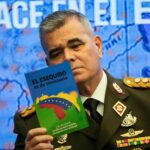

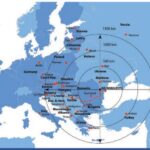



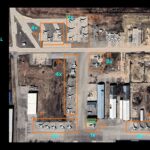


On the presentation model: Kind of late now, but from readers perception, it might have been better to put the latest updates on TOP of the page (so have the last update above, not below). This way the daily readers do not have to scroll down each day to read the latest updates.
On the content: great job, big like. I needed something like this in the past for the Euphrates shield campaign in the north and for the Al-Bab siege, Mosul siege, Allepo siege, etc.
Thank you for your feedback.
Despite some brief interruptions I have managed to continue the feed and due to the high volume of data complied in this page, a new separate post was needed for the events unfolding after August 1st. In that post, I have taken into account your feedback and placed the newest entries above, not below.
Check it out:
https://t-intell.com/2017/08/03/battle-for-raqqa-vol-2-live-journal/